Maryam Lawal, Founder of London’s House of African Art, on Bringing the Continent’s Vibrant Contemporary Art Scene to New Audiences
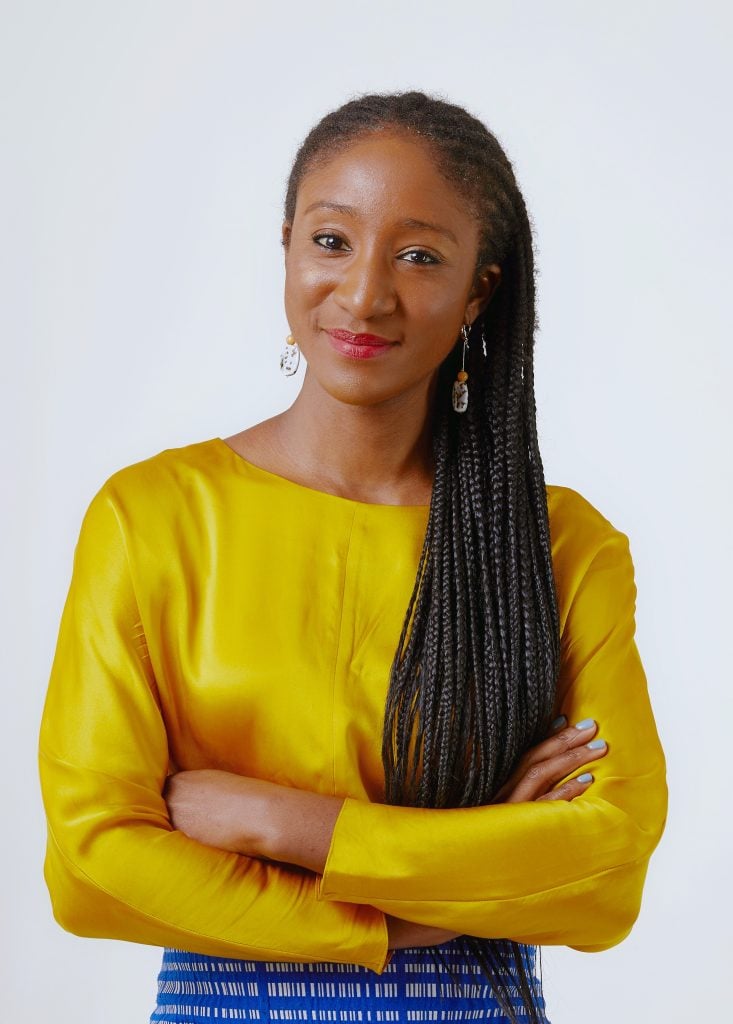

Katie White

In the 2010s, Maryam Lawal, a British-Nigerian lawyer and lifelong art lover, recognized a gap in London’s booming art scene. During trips to Lagos and Accra, she often found herself immersed in spirited contemporary art scenes that were bursting with talent. But back in London, as she attended openings and went on weekend gallery viewings, it was as though these contemporary artists didn’t exist.
“People have a lot of misconceptions about what contemporary African art is,” said Lawal. “There are really antiquated associations with tribal art. Meanwhile, contemporary artists are working at a very high caliber all over the continent.”
In 2018, Lawal founded House of African Art (HAART), a London-based pop-up gallery that focuses on contemporary African art and art of the diaspora, and has spent the years since introducing audiences to artists and artworks they may never have seen otherwise.
Recently, we caught up with Lawal, who shared her insights on changing conceptions of African art, why the pop-up model has benefited the gallery in quarantine, and what artworks she wishes she owned.
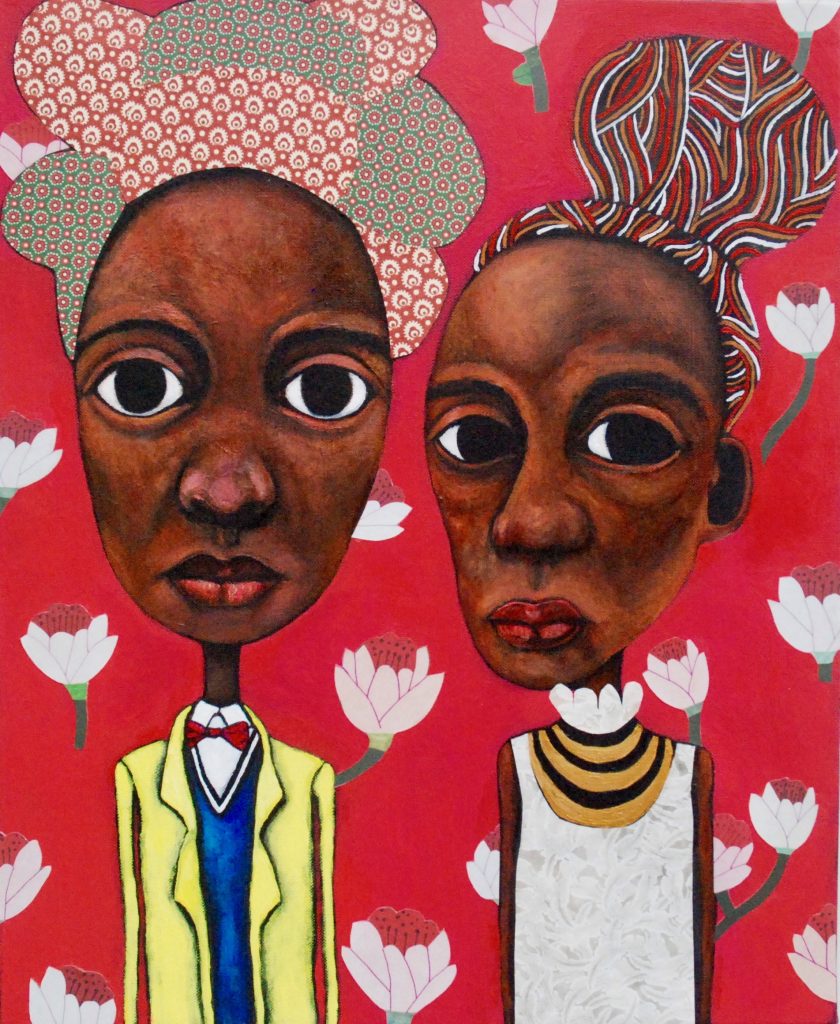
Zoya Taylor, Caribbean Gothic. Courtesy of House of African Art.
What do you think are some of the biggest misconceptions about contemporary African art? How is HAART challenging these assumptions?
There are two main ways of looking at this. The first is in relation to the type of artwork that people would expect to see, and the second is in relation to the themes or the issues that the artwork is exploring.
When people hear the term African art or even Contemporary African art, there are outdated images that still immediately come to mind, like tribal masks or paintings of rural scenes. In reality, there is a very wide range to the work emerging from across Africa, from digital installations to abstract pieces to immersive experiences. That’s why it was really important for me to include “African art” in the title of the gallery platform because people have these misconceptions or these outdated views that we wanted to challenge head on.
The second point is about themes: when I speak to African artists, I think that they sometimes feel like there’s an expectation that their works will be exploring particular topics relating to hardship or struggle or racial injustice or the socio-political problems in their native countries.
But the reality is much more multifaceted than that. There are more stories and subjects which artists of African origin are exploring. People struggle to see these artworks outside of that box. So with HAART and what we show we’re hoping to challenge people’s thinking of what African artists are producing and what their works stand for.
How does HAART try to carry out this mission?
We want inclusivity in the types of works that are shown, but also in terms of the atmosphere. I don’t think you have to be elitist or standoffish with people to create a professional, high-quality exhibition.
We want to create a warm, welcoming environment in the art world. I’ve spoken to many people from different sectors of life, varied backgrounds, who may not be well-versed in the workings of the art world and who are not yet established collectors. Many people find the traditional art-gallery experience to be quite isolating and intimidating and are not really sure where to start with visual art. We don’t want them to be afraid to ask.
One of the main drivers with HAART is to put on high-quality art exhibitions, where we’re showing fine art in a professional way, but in a non-intimidating way. We don’t want people to feel that this space is not for them. So one of the other motivations at HAART is to bridge that gap and to create that connection between people, the artists, and the artworks themselves.
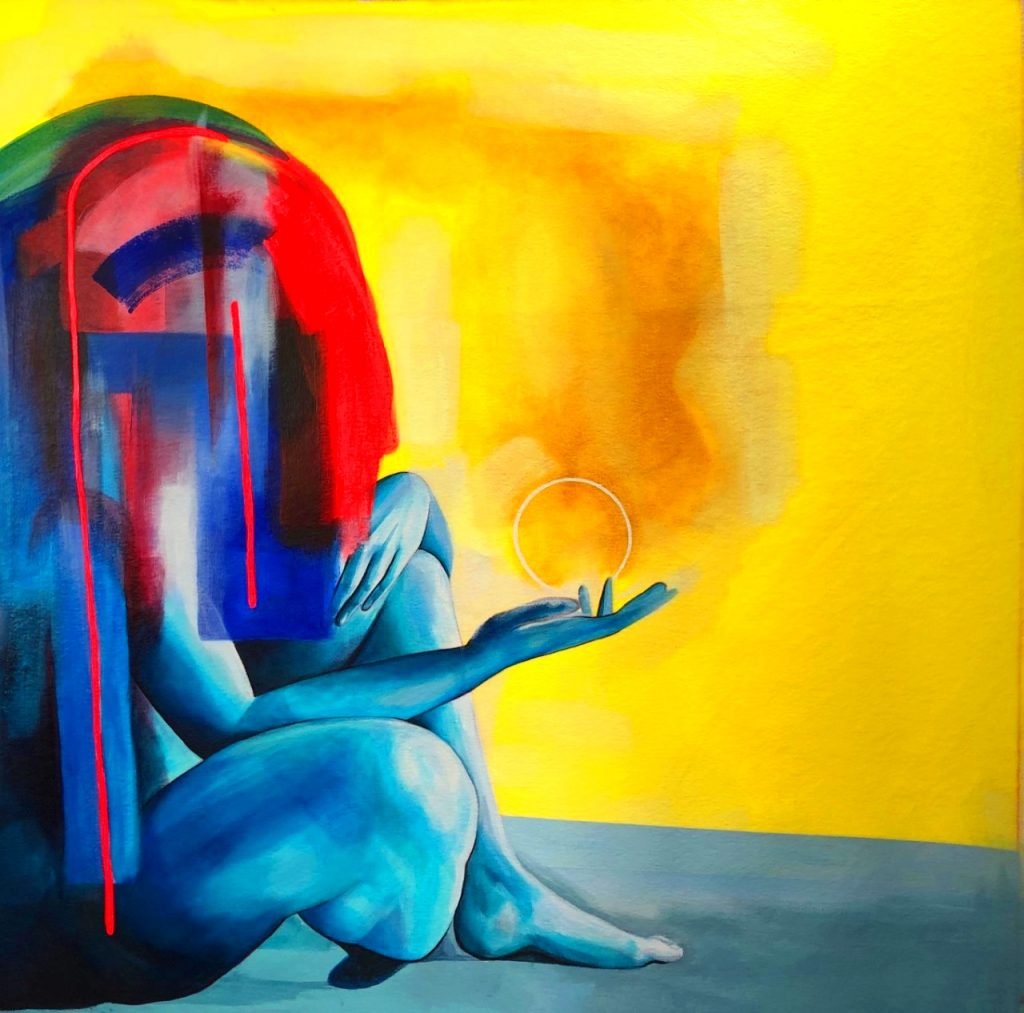
Ayesha Feisal, Gift II. Courtesy of House of African Art.
As a pop-up gallery, how has HAART been adapting to lockdown?
We had our next major exhibition scheduled for May. We were at a point where we had the artworks and all the details finalized. Postponing the show was really tough and felt like a big shame when we were so close to completion.
But, with the exception of that experience, I think it’s been relatively easy for HAART otherwise. The flexibility that a popup model gives us has been so, so important for the survival of the gallery during this period. We are able to reschedule events and still stay connected to collectors and followers through social media and online marketing. We’ve still been able to make pretty strong sales, despite not having been able to put on the physical exhibition.
It’s not only about an economic perspective too. The pop-up aspect has let us have the flexibility of exploring different spaces so that we can fit these spaces to different artistic perspectives and works as well. You’re not trapped with a tiny white cube, necessarily.
What have you been reading, watching, listening to during quarantine?
My reading choices seem to be mirroring what’s happening in the wider world. So when quarantine first began, I read Viktor Frankl’s Man’s Search for Meaning, which chronicles his experiences as a prisoner in a Nazi concentration camp during World War II. In terms of a broader significance, the book is a timeless classic about the importance of keeping hope, despite very challenging circumstances.
Then as we entered this new place of having heightened conversations about race relations and police brutality, I found it hard for me not to think about these issues and I re-read Roots by Alex Haley and the Autobiography of Malcolm X. Now I’m about to start reading How to Be an Anti-Racist by Ibram X. Kendi.
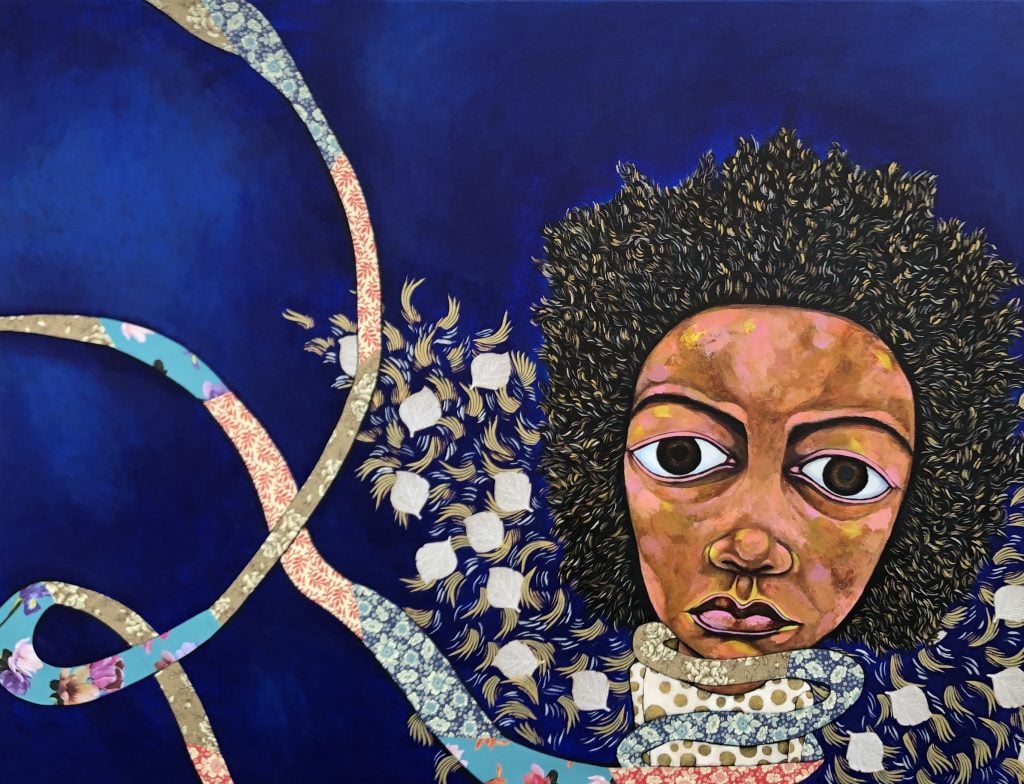
Zoya Taylor, Ties That Bind. Courtesy of House of African Art.
How have your artists been responding to this unusual period of time in their work if at all?
Zoya Taylor, one of the artists I work with, and I had some really interesting conversations about this when we spoke about how she’s getting on in this period.
In the past, her work has looked to the challenges people face in terms of alienation and difference. But the idea of being in the house and alone in society have become somewhat more universal. And, for her, these questions of marginality and exclusion and isolation have shifted in the pandemic. She’s evolved it into looking into a framework to look at what it means to belong in this state of isolation.
We’ve been forced to take stock of what’s truly important to us on an individual level. And most times that points back to say family or loved ones or, you know, one’s local community, and which is again, all part of the different facets of belonging. Now, Zoya’s looking into how to express that visually in her pieces.
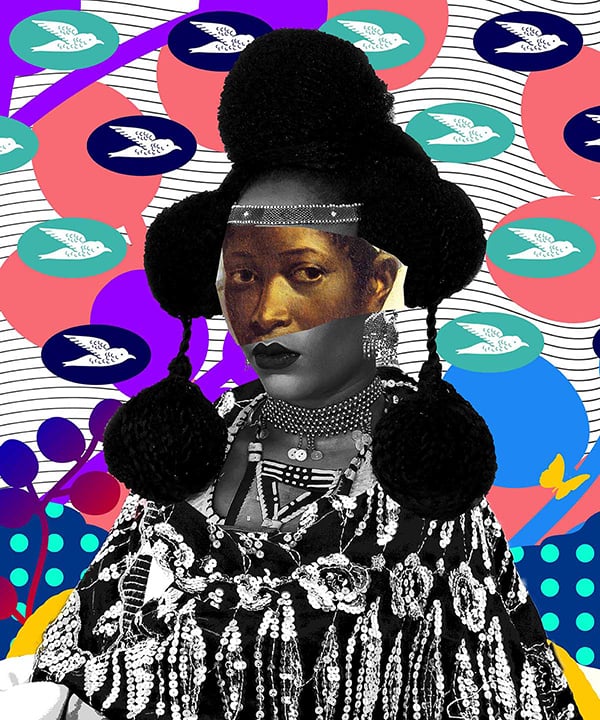
Williams Chechet, Hadassah Maigari’s Pride. Courtesy of House of African Art.
There are not many Black women gallerists in the art world. How has this informed your experience as a dealer? I’m particularly interested in how this offers a different perspective to artist and gallerist relationships.
Given that I’ve chosen to focus on supporting, representing, and showcasing artists from Africa and the diaspora and that I myself, am a dual Nigerian and British citizen, who maintains strong ties with Nigeria and other African countries, I think that it’s meant that sometimes the themes or ideas, with which artists are preoccupied can relate to me on a personal level. I’ve been able to have that genuine connection when artists are exploring issues related to their identity or their traditional cultural origins, though not all of the artists are tackling these subjects. Nevertheless, when dealing with collectors, the artists and I can feel more unified in a sense.
How would you describe your collector base and do you feel like you’re connecting with new audiences, existing audiences, or a combination of both?
I like this question because it kind of points back to one of those fears that I had before I started HAART, which was that I was very conscious that even though the platform is very clearly stated to be about African artists and African art, it’s not meant to be exclusionary in any way. The idea is that we’re showcasing this work, but we’re also creating an inviting platform, which everyone is welcome to. And I’ve been really pleased to see that the base of collectors and buyers has been broad. Maybe our clients are on the younger and middle-aged end of the spectrum, but in terms of demographics, they’re really varied and from the UK, the US, and also across Europe.
What would have been the biggest challenges and rewards of operating your own gallery?
With traditional work, I think it can sometimes be a little bit easier to demarcate between your work life and your personal life. This gallery is my creation, it’s very demanding because of how personally invested I am in it. If a public exhibition is coming in seven days, time, and I need to make sure all the work is in place and all the exhibition texts are right and printed and people are coming—it is very, very, stressful.
On the flip side of that. It’s so rewarding. Once you see everything come to fruition, and once you’re actually holding the shows and meeting people and you know, and someone says, “Oh, I’ve flown in from New York and I heard about this”—that’s incredibly touching.
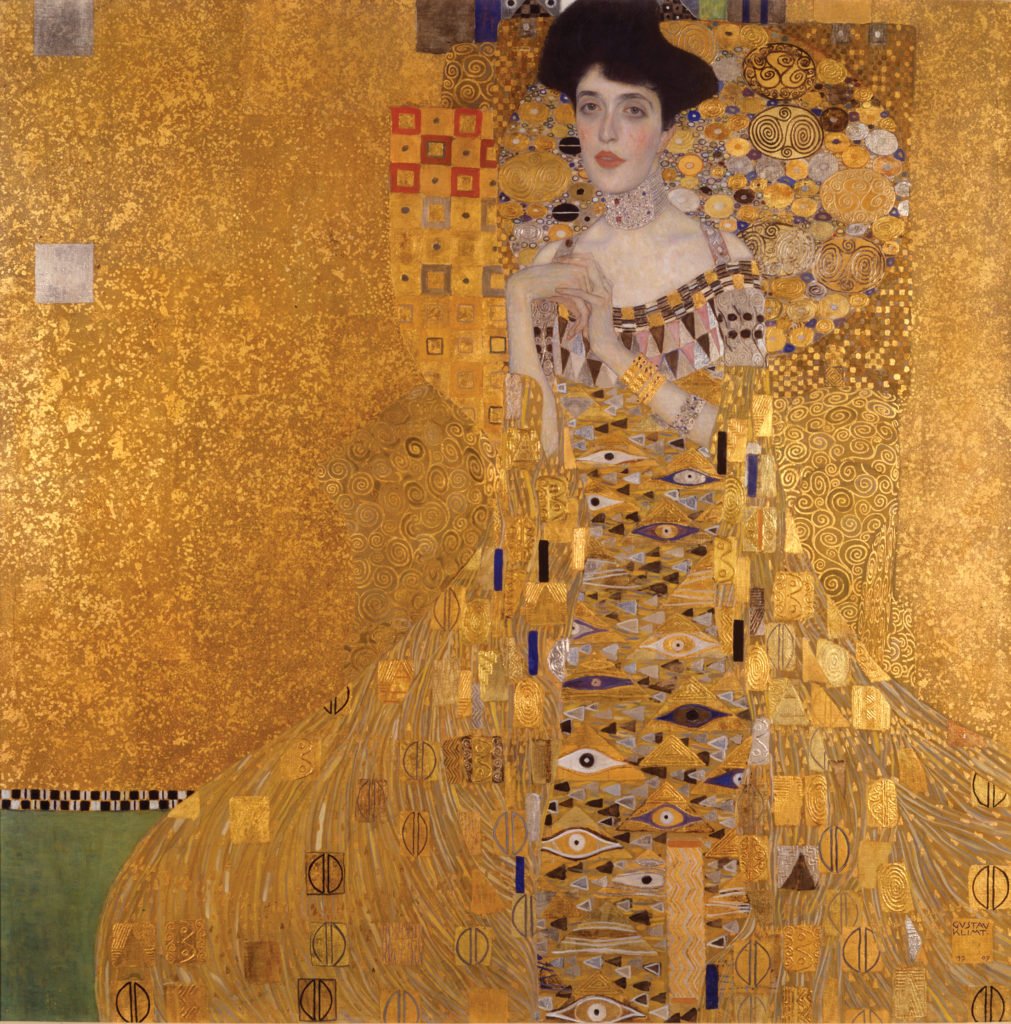
Gustav Klimt, Portrait of Adele Bloch-Bauer I (1907). Courtesy of the Neue Galerie.
Let’s end on a fun question: if you could own one artwork—no limitations—what would it be?
I’d definitely go with one of Klimt’s works from the golden period. It would be a toss-up between The Kiss or Portrait of Adele Bloch-Bauer. So, since this is imaginary, I have to say I’ll choose two. For me, there’s a timeless elegance and superior quality to Klimt’s work from this period in particular that I think just remains unparalleled to this day.